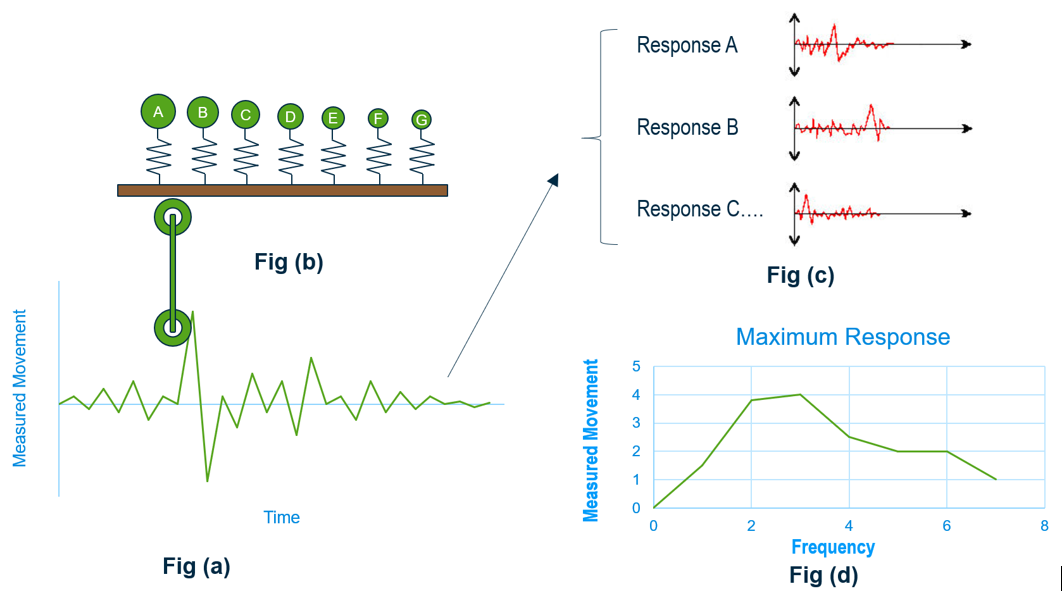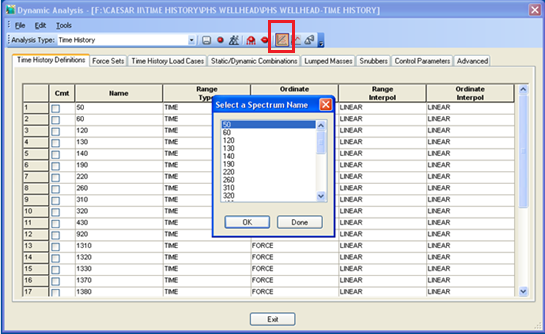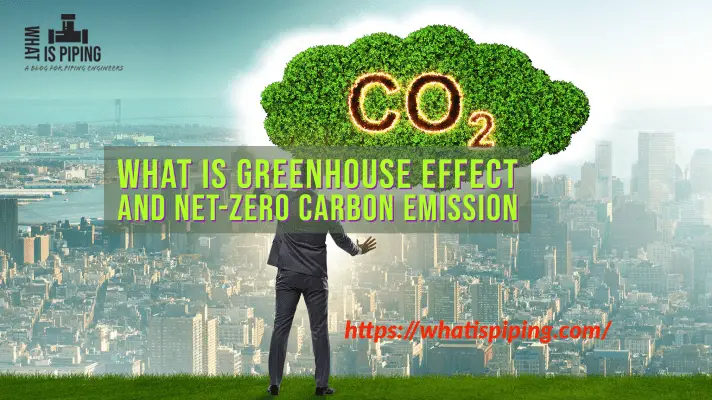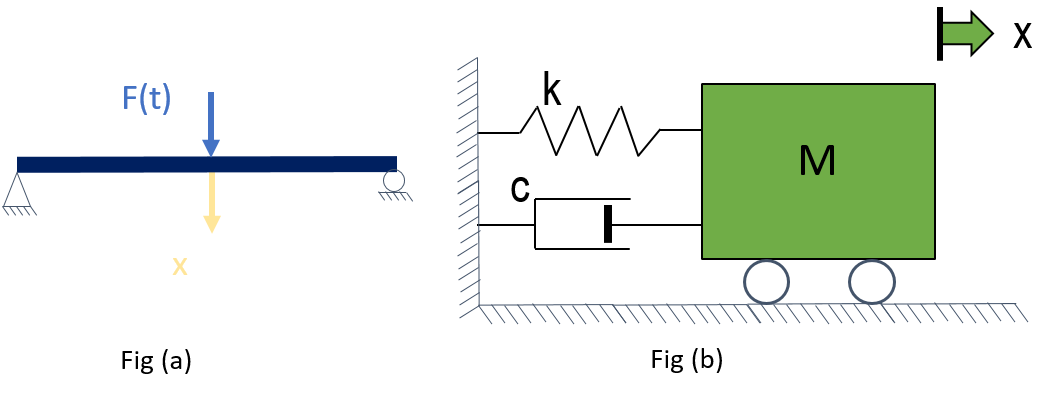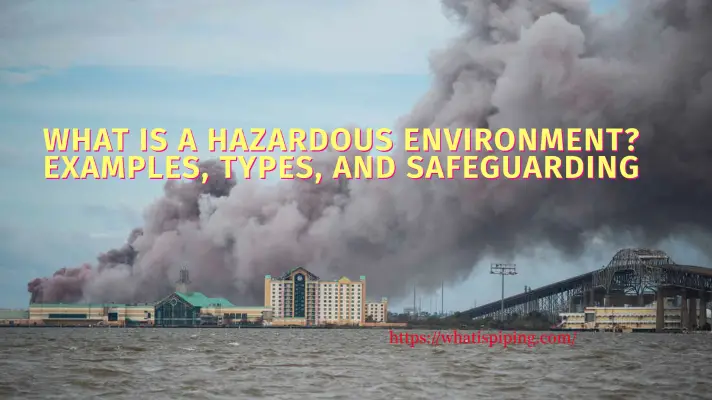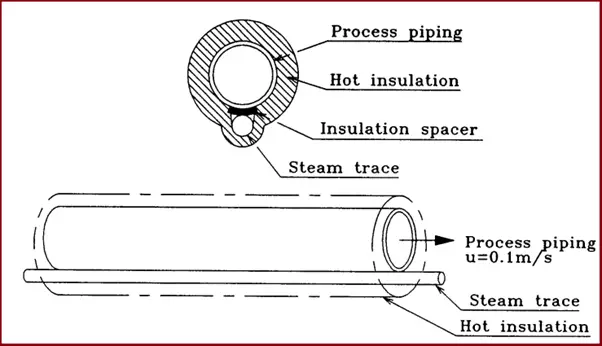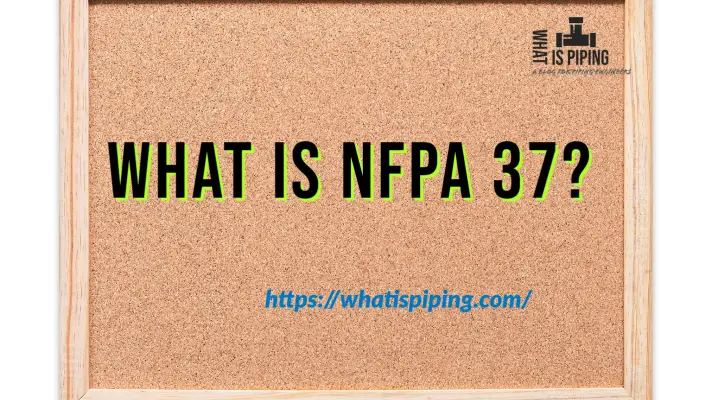Fire has been both a crucial element in human progress and a formidable force of destruction throughout history. As communities have grown and technology has advanced, so too have the challenges of fire safety and prevention. In response to these ever-evolving threats, the National Fire Protection Association (NFPA) stands as a beacon of knowledge and expertise in promoting fire safety, reducing risks, and preventing fire-related tragedies. In this article, we’ll delve into the origins, mission, key initiatives, and impact of the NFPA on safeguarding lives and property across the nation.
The Birth of NFPA
The NFPA’s roots can be traced back to the early 1890s when a group of forward-thinking individuals recognized the need for a standardized approach to fire safety. In 1896, they officially founded the NFPA, with a mission to reduce the frequency and impact of fires through research, education, and the establishment of fire codes and standards.
NFPA’s Mission and Objectives
The primary mission of the NFPA is to promote fire and life safety by providing and advocating for consensus-based codes and standards, research, training, and education. Some of its key objectives include:
- Developing Codes and Standards: The NFPA creates and updates more than 300 codes and standards that cover various aspects of fire safety, including building construction, electrical systems, fire prevention, and emergency response procedures.
- Research and Data Collection: The association conducts research to better understand fire behavior, safety technologies, and emerging risks. This data-driven approach ensures that their codes and standards remain relevant and effective.
- Education and Training: The NFPA offers a wide range of educational programs, seminars, and resources to inform individuals and organizations about fire safety best practices and regulatory compliance.
Impact on Fire Safety
The NFPA’s impact on fire safety cannot be overstated. Over the years, the implementation of their codes and standards has significantly reduced the number of fire-related incidents and the associated loss of life and property. Their influence can be seen in various areas:
- Building and Electrical Safety: NFPA codes set the standard for building construction and electrical systems, ensuring that structures are designed with fire safety in mind. This has led to safer buildings and reduced fire risks.
- Fire Prevention and Suppression: The association’s guidelines for fire prevention and suppression help fire departments and first responders tackle fires effectively, minimizing their spread and damage.
- Emergency Response: NFPA’s standards also guide emergency response procedures, ensuring that firefighters and other responders are well-prepared to handle any fire-related situation.
- Public Awareness: Through education and outreach efforts, the NFPA raises public awareness about fire safety, encouraging individuals to take preventive measures and be more vigilant.
NFPA and Technological Advancements
As technology continues to evolve, new fire safety challenges emerge. The NFPA actively keeps pace with technological advancements, integrating them into its codes and standards. From the growing use of lithium-ion batteries to the rise of electric vehicles, the association addresses emerging fire safety concerns proactively.
NFPA Codes and Standards
NFPA (National Fire Protection Association) is renowned for developing and maintaining hundreds of codes and standards that establish the benchmark for fire safety, prevention, and emergency response in various industries and settings. These codes and standards are critical tools in promoting best practices and ensuring the protection of lives, property, and the environment. Let’s explore some of the most important NFPA codes and standards:
NFPA 1: Fire Code
NFPA 1, the Fire Code, is a comprehensive document that addresses fire safety requirements for a wide range of occupancies, processes, and hazards. It covers fire prevention measures, fire protection systems, emergency planning, and building construction, among other topics. Local governments often adopt NFPA 1 as the basis for their fire codes.
NFPA 70: National Electrical Code (NEC)
The NEC, also known as NFPA 70, is one of the most widely used and referenced codes in the world. It governs the installation and maintenance of electrical systems to prevent fire and electrical hazards. The NEC is updated every three years to keep pace with technological advancements and industry developments.
NFPA 101: Life Safety Code
NFPA 101, the Life Safety Code, sets requirements for the design, construction, operation, and maintenance of buildings to ensure safe egress and protection from fire and related hazards. It covers a wide range of occupancies, from healthcare facilities and educational institutions to residential buildings.
NFPA 13: Standard for the Installation of Sprinkler Systems
NFPA 13 provides guidelines for the installation of automatic sprinkler systems, including design, placement, and maintenance. Sprinkler systems are essential fire protection measures that can significantly reduce the spread of fire and limit damage.
NFPA 72: National Fire Alarm and Signaling Code
NFPA 72 sets the standards for the design, installation, testing, and maintenance of fire alarm systems, signaling systems, and emergency communication systems. These systems play a crucial role in alerting occupants and emergency responders to fire incidents.
NFPA 20: Standard for the Installation of Stationary Pumps for Fire Protection
NFPA 20 provides guidelines for the installation of stationary pumps used in water supply systems for fire protection. These pumps ensure an adequate water supply for firefighting operations.
NFPA 25: Standard for the Inspection, Testing, and Maintenance of Water-Based Fire Protection Systems
NFPA 25 outlines the requirements for inspecting, testing, and maintaining water-based fire protection systems, including sprinklers, standpipes, and hydrants. Regular maintenance is crucial to ensure the reliability of these systems.
NFPA 30: Flammable and Combustible Liquids Code
NFPA 30 addresses the storage, handling, and use of flammable and combustible liquids, including fuel storage tanks, chemical facilities, and gas stations.
NFPA 70E: Standard for Electrical Safety in the Workplace
NFPA 70E guides electrical safety practices for workplaces to protect workers from electrical hazards.
NFPA 921: Guide for Fire and Explosion Investigations
NFPA 921 outlines best practices for conducting fire and explosion investigations to determine their origin and cause. This standard is essential in understanding how fires start and how to prevent similar incidents in the future.
List of NFPA Codes and Standards
The following table provides the list of NFPA Codes and Standards
| Name of the NFPA Code/Standard | NFPA Code/Standard Number |
| Fire Code | NFPA 1 |
| Hydrogen Technologies Code | NFPA 2 |
| Standard for Commissioning of Fire Protection and Life Safety Systems | NFPA 3 |
| Standard for Integrated Fire Protection and Life Safety System Testing | NFPA 4 |
| Standard for Portable Fire Extinguishers | NFPA 10 |
| Standard for Low-, Medium-, and High-Expansion Foam | NFPA 11 |
| Standard for Medium- and High-Expansion Foam Systems | NFPA 11A |
| Standard for Mobile Foam Apparatus | NFPA 11C |
| Standard on Carbon Dioxide Extinguishing Systems | NFPA 12 |
| Standard on Halon 1301 Fire Extinguishing Systems | NFPA 12A |
| Standard for the Installation of Sprinkler Systems | NFPA 13 |
| Standard for the Installation of Sprinkler Systems in One- and Two-Family Dwellings and Manufactured Homes | NFPA 13D |
| Recommended Practice for Fire Department Operations in Properties Protected by Sprinkler and Standpipe Systems | NFPA 13E |
| Standard for the Installation of Sprinkler Systems in Low-Rise Residential Occupancies | NFPA 13R |
| Standard for the Installation of Standpipe and Hose Systems | NFPA 14 |
| Standard for Water Spray Fixed Systems for Fire Protection | NFPA 15 |
| Standard for the Installation of Foam-Water Sprinkler and Foam-Water Spray Systems | NFPA 16 |
| Standard for Dry Chemical Extinguishing Systems | NFPA 17 |
| Standard for Wet Chemical Extinguishing Systems | NFPA 17A |
| Standard on Wetting Agents | NFPA 18 |
| Standard on Water Additives for Fire Control and Vapor Mitigation | NFPA 18A |
| Standard for the Installation of Stationary Pumps for Fire Protection | NFPA 20 |
| Standard for Water Tanks for Private Fire Protection | NFPA 22 |
| Standard for the Installation of Private Fire Service Mains and Their Appurtenances | NFPA 24 |
| Standard for the Inspection, Testing, and Maintenance of Water-Based Fire Protection Systems | NFPA 25 |
| Flammable and Combustible Liquids Code | NFPA 30 |
| Code for Motor Fuel Dispensing Facilities and Repair Garages | NFPA 30A |
| Code for the Manufacture and Storage of Aerosol Products | NFPA 30B |
| Standard for the Installation of Oil-Burning Equipment | NFPA 31 |
| Standard for Drycleaning Facilities | NFPA 32 |
| Standard for Spray Application Using Flammable or Combustible Materials | NFPA 33 |
| Standard for Dipping, Coating, and Printing Processes Using Flammable or Combustible Liquids | NFPA 34 |
| Standard for the Manufacture of Organic Coatings | NFPA 35 |
| Standard for Solvent Extraction Plants | NFPA 36 |
| Standard for the Installation and Use of Stationary Combustion Engines and Gas Turbines | NFPA 37 |
| Standard for Firefighters, Fire Apparatus Drivers/Operators, Airport Firefighters, and Marine Firefighting for Land-Based Firefighters Professional Qualifications | NFPA 40 |
| Code for the Storage of Pyroxylin Plastic | NFPA 42 |
| Standard on Fire Protection for Laboratories Using Chemicals | NFPA 45 |
| Recommended Safe Practice for Storage of Forest Products | NFPA 46 |
| Standard for Bulk Oxygen Systems at Consumer Sites | NFPA 50 |
| Standard for Gaseous Hydrogen Systems at Consumer Sites | NFPA 50A |
| Standard for Liquefied Hydrogen Systems at Consumer Sites | NFPA 50B |
| Standard for the Design and Installation of Oxygen-Fuel Gas Systems for Welding, Cutting, and Allied Processes | NFPA 51 |
| Standard for Acetylene Cylinder Charging Plants | NFPA 51A |
| Standard for Fire Prevention During Welding, Cutting, and Other Hot Work | NFPA 51B |
| Vehicular Natural Gas Fuel Systems Code | NFPA 52 |
| Recommended Practice on Materials, Equipment, and Systems Used in Oxygen-Enriched Atmospheres | NFPA 53 |
| National Fuel Gas Code | NFPA 54 |
| Compressed Gases and Cryogenic Fluids Code | NFPA 55 |
| Standard for Fire and Explosion Prevention During Cleaning and Purging of Flammable Gas Piping Systems | NFPA 56 |
| Liquefied Natural Gas (LNG) Vehicular Fuel Systems Code | NFPA 57 |
| Liquefied Petroleum Gas Code | NFPA 58 |
| Utility LP-Gas Plant Code | NFPA 59 |
| Standard for the Production, Storage, and Handling of Liquefied Natural Gas (LNG) | NFPA 59A |
| Standard for the Prevention of Fires and Dust Explosions in Agricultural and Food Processing Facilities | NFPA 61 |
| Guide on Explosion Protection for Gaseous Mixtures in Pipe Systems | NFPA 67 |
| Standard on Explosion Protection by Deflagration Venting | NFPA 68 |
| Standard on Explosion Prevention Systems | NFPA 69 |
| National Electrical Code® | NFPA 70® |
| National Electrical Code® Requirements for One- and Two-Family Dwellings | NFPA 70A |
| Standard for Electrical Equipment Maintenance | NFPA 70B |
| Standard for Electrical Safety in the Workplace® | NFPA 70E® |
| National Fire Alarm and Signaling Code® | NFPA 72® |
| Standard for Electrical Inspections for Existing Dwellings | NFPA 73 |
| Standard for the Fire Protection of Information Technology Equipment | NFPA 75 |
| Standard for the Fire Protection of Telecommunications Facilities | NFPA 76 |
| Recommended Practice on Static Electricity | NFPA 77 |
| Guide on Electrical Inspections | NFPA 78 |
| Electrical Standard for Industrial Machinery | NFPA 79 |
| Standard for Fire Doors and Other Opening Protectives | NFPA 80 |
| Recommended Practice for Protection of Buildings from Exterior Fire Exposures | NFPA 80A |
| Standard on Incinerators and Waste and Linen Handling Systems and Equipment | NFPA 82 |
| Boiler and Combustion Systems Hazards Code | NFPA 85 |
| Standard for Ovens and Furnaces | NFPA 86 |
| Standard for Industrial Furnaces Using a Special Processing Atmosphere | NFPA 86C |
| Standard for Industrial Furnaces Using Vacuum as an Atmosphere | NFPA 86D |
| Standard for Fluid Heaters | NFPA 87 |
| Standard for Parking Structures | NFPA 88A |
| Standard for Repair Garages | NFPA 88B |
| Standard for the Installation of Air-Conditioning and Ventilating Systems | NFPA 90A |
| Standard for the Installation of Warm Air Heating and Air-Conditioning Systems | NFPA 90B |
| Standard for Exhaust Systems for Air Conveying of Vapors, Gases, Mists, and Particulate Solids | NFPA 91 |
| Standard for Smoke Control Systems | NFPA 92 |
| Standard for Smoke-Control Systems Utilizing Barriers and Pressure Differences | NFPA 92A |
| Standard for Smoke Management Systems in Malls, Atria, and Large Spaces | NFPA 92B |
| Standard for Ventilation Control and Fire Protection of Commercial Cooking Operations | NFPA 96 |
| Standard Glossary of Terms Relating to Chimneys, Vents, and Heat-Producing Appliances | NFPA 97 |
| Health Care Facilities Code | NFPA 99 |
| Standard for Hypobaric Facilities | NFPA 99B |
| Life Safety Code® | NFPA 101® |
| Guide on Alternative Approaches to Life Safety | NFPA 101A |
| Code for Means of Egress for Buildings and Structures | NFPA 101B |
| Standard for Grandstands, Folding and Telescopic Seating, Tents, and Membrane Structures | NFPA 102 |
| Standard for Smoke Door Assemblies and Other Opening Protectives | NFPA 105 |
| Standard for Emergency and Standby Power Systems | NFPA 110 |
| Standard on Stored Electrical Energy Emergency and Standby Power Systems | NFPA 111 |
| Standard for Laser Fire Protection | NFPA 115 |
| Standard for Fire Prevention and Control in Coal Mines | NFPA 120 |
| Standard on Fire Protection for Self-Propelled and Mobile Surface Mining Equipment | NFPA 121 |
| Standard for Fire Prevention and Control in Metal/Nonmetal Mining and Metal Mineral Processing Facilities | NFPA 122 |
| Standard for Fire Prevention and Control in Underground Bituminous Coal Mines | NFPA 123 |
| Standard for Fixed Guideway Transit and Passenger Rail Systems | NFPA 130 |
| Standard on Motion Picture and Television Production Studio Soundstages, Approved Production Facilities, and Production Locations | NFPA 140 |
| Fire and Life Safety in Animal Housing Facilities Code | NFPA 150 |
| Standard for the Use of Flame Effects Before an Audience | NFPA 160 |
| Standard for Fire Safety and Emergency Symbols | NFPA 170 |
| Standard for Hanging and Bracing of Fire Suppression Systems | NFPA 200 |
| Guide on Roof Coverings and Roof Deck Constructions | NFPA 203 |
| Standard for Smoke and Heat Venting | NFPA 204 |
| Standard for Chimneys, Fireplaces, Vents, and Solid Fuel-Burning Appliances | NFPA 211 |
| Standard on Water-Cooling Towers | NFPA 214 |
| Standard on Types of Building Construction | NFPA 220 |
| Standard for High Challenge Fire Walls, Fire Walls, and Fire Barrier Walls | NFPA 221 |
| Model Manufactured Home Installation Standard | NFPA 225 |
| Standard for the Fire Protection of Storage | NFPA 230 |
| Standard for General Storage | NFPA 231 |
| Standard for Rack Storage of Materials | NFPA 231C |
| Standard for Storage of Rubber Tires | NFPA 231D |
| Recommended Practice for the Storage of Baled Cotton | NFPA 231E |
| Standard for the Storage of Roll Paper | NFPA 231F |
| Standard for the Protection of Records | NFPA 232 |
| Guide for Fire Protection for Archives and Records Centers | NFPA 232A |
| Standard for Safeguarding Construction, Alteration, and Demolition Operations | NFPA 241 |
| Standard Methods of Tests of Fire Resistance of Building Construction and Materials | NFPA 251 |
| Standard Methods of Fire Tests of Door Assemblies | NFPA 252 |
| Standard Method of Test for Critical Radiant Flux of Floor Covering Systems Using a Radiant Heat Energy Source | NFPA 253 |
| Standard Method of Test of Surface Burning Characteristics of Building Materials | NFPA 255 |
| Standard Methods of Fire Tests of Roof Coverings | NFPA 256 |
| Standard on Fire Test for Window and Glass Block Assemblies | NFPA 257 |
| Recommended Practice for Determining Smoke Generation of Solid Materials | NFPA 258 |
| Standard Test Method for Potential Heat of Building Materials | NFPA 259 |
| Standard Methods of Tests and Classification System for Cigarette Ignition Resistance of Components of Upholstered Furniture | NFPA 260 |
| Standard Method of Test for Determining Resistance of Mock-Up Upholstered Furniture Material Assemblies to Ignition by Smoldering Cigarettes | NFPA 261 |
| Standard Method of Test for Flame Travel and Smoke of Wires and Cables for Use in Air-Handling Spaces | NFPA 262 |
| Standard Methods of Fire Tests for Evaluating Room Fire Growth Contribution of Textile or Expanded Vinyl Wall Coverings on Full Height Panels and Walls | NFPA 265 |
| Standard Method of Test for Fire Characteristics of Upholstered Furniture Exposed to Flaming Ignition Source | NFPA 266 |
| Standard Method of Test for Fire Characteristics of Mattresses and Bedding Assemblies Exposed to Flaming Ignition Source | NFPA 267 |
| Standard Test Method for Determining Ignitability of Exterior Wall Assemblies Using a Radiant Heat Energy Source | NFPA 268 |
| Standard Test Method for Developing Toxic Potency Data for Use in Fire Hazard Modeling | NFPA 269 |
| Standard Test Method for Measurement of Smoke Obscuration Using a Conical Radiant Source in a Single Closed Chamber | NFPA 270 |
| Standard Method of Test for Heat and Visible Smoke Release Rates for Materials and Products Using an Oxygen Consumption Calorimeter | NFPA 271 |
| Standard Method of Test for Heat and Visible Smoke Release Rates for Upholstered Furniture Components or Composites and Mattresses Using an Oxygen Consumption Calorimeter | NFPA 272 |
| Standard Test Method to Evaluate Fire Performance Characteristics of Pipe Insulation | NFPA 274 |
| Standard Method of Fire Tests for the Evaluation of Thermal Barriers | NFPA 275 |
| Standard Method of Fire Test for Determining the Heat Release Rate of Roofing Assemblies with Combustible Above-Deck Roofing Components | NFPA 276 |
| Standard Methods of Tests for Evaluating Fire and Ignition Resistance of Upholstered Furniture Using a Flaming Ignition Source | NFPA 277 |
| Standard Fire Test Method for Evaluation of Fire Propagation Characteristics of Exterior Wall Assemblies Containing Combustible Components | NFPA 285 |
| Standard Methods of Fire Tests for Evaluating Contribution of Wall and Ceiling Interior Finish to Room Fire Growth | NFPA 286 |
| Standard Test Methods for Measurement of Flammability of Materials in Cleanrooms Using a Fire Propagation Apparatus (FPA) | NFPA 287 |
| Standard Methods of Fire Tests of Horizontal Fire Door Assemblies Installed in Horizontal Fire Resistance-Rated Assemblies | NFPA 288 |
| Standard Method of Fire Test for Individual Fuel Packages | NFPA 289 |
| Standard for Fire Testing of Passive Protection Materials for Use on LP-Gas Containers | NFPA 290 |
| Recommended Practice for Water Flow Testing and Marking of Hydrants | NFPA 291 |
| Standard for Wildfire Control | NFPA 295 |
| Guide on Principles and Practices for Communications Systems | NFPA 297 |
| Standard on Foam Chemicals for Wildland Fire Control | NFPA 298 |
| Standard for Protection of Life and Property from Wildfire | NFPA 299 |
| Code for Safety to Life from Fire on Merchant Vessels | NFPA 301 |
| Fire Protection Standard for Pleasure and Commercial Motor Craft | NFPA 302 |
| Fire Protection Standard for Marinas and Boatyards | NFPA 303 |
| Standard for the Control of Gas Hazards on Vessels | NFPA 306 |
| Standard for the Construction and Fire Protection of Marine Terminals, Piers, and Wharves | NFPA 307 |
| Standard for Fire Protection of Vessels During Construction, Conversion, Repair, and Lay-Up | NFPA 312 |
| Standard for the Protection of Semiconductor Fabrication Facilities | NFPA 318 |
| Standard for the Safeguarding of Tanks and Containers for Entry, Cleaning, or Repair | NFPA 326 |
| Recommended Practice for the Control of Flammable and Combustible Liquids and Gases in Manholes, Sewers, and Similar Underground Structures | NFPA 328 |
| Recommended Practice for Handling Releases of Flammable and Combustible Liquids and Gases | NFPA 329 |
| Guide for Safe Confined Space Entry and Work | NFPA 350 |
| Standard for Tank Vehicles for Flammable and Combustible Liquids | NFPA 385 |
| Standard for Portable Shipping Tanks for Flammable and Combustible Liquids | NFPA 386 |
| Standard for the Storage of Flammable and Combustible Liquids at Farms and Isolated Sites | NFPA 395 |
| Hazardous Materials Code | NFPA 400 |
| Recommended Practice for the Prevention of Fires and Uncontrolled Chemical Reactions Associated with the Handling of Hazardous Waste | NFPA 401 |
| Guide for Aircraft Rescue and Fire-Fighting Operations | NFPA 402 |
| Standard for Aircraft Rescue and Fire-Fighting Services at Airports | NFPA 403 |
| Standard for the Recurring Proficiency of Airport Fire Fighters | NFPA 405 |
| Standard for Aircraft Fuel Servicing | NFPA 407 |
| Standard for Aircraft Hand Portable Fire Extinguishers | NFPA 408 |
| Standard on Aircraft Hangars | NFPA 409 |
| Standard on Aircraft Maintenance | NFPA 410 |
| Standard for Evaluating Aircraft Rescue and Fire-Fighting Foam Equipment | NFPA 412 |
| Standard for Aircraft Rescue and Fire-Fighting Vehicles | NFPA 414 |
| Standard on Airport Terminal Buildings, Fueling Ramp Drainage, and Loading Walkways | NFPA 415 |
| Standard for Heliports | NFPA 418 |
| Standard on Fire Protection of Cannabis Growing and Processing Facilities | NFPA 420 |
| Guide for Aircraft Accident/Incident Response Assessment | NFPA 422 |
| Standard for Construction and Protection of Aircraft Engine Test Facilities | NFPA 423 |
| Guide for Airport/Community Emergency Planning | NFPA 424 |
| Code for the Storage of Liquid and Solid Oxidizers | NFPA 430 |
| Code for the Storage of Organic Peroxide Formulations | NFPA 432 |
| Code for the Storage of Pesticides | NFPA 434 |
| Guide for Aircraft Rescue and Firefighting Operations and Airport/Community Emergency Planning | NFPA 440 |
| Guide for Emergency Medical Services and Systems | NFPA 450 |
| Guide for Community Health Care Programs | NFPA 451 |
| Guide for Emergency Medical Services and Systems and Community Health Care Programs | NFPA 455 |
| Standard for Aircraft Rescue and Firefighting Services at Airports | NFPA 460 |
| Standard for Fire Protection of Spaceport Facilities | NFPA 461 |
| Hazardous Materials/Weapons of Mass Destruction (WMD) Standard for Responders | NFPA 470 |
| Recommended Practice for Responding to Hazardous Materials Incidents | NFPA 471 |
| Standard for Competence of Responders to Hazardous Materials/Weapons of Mass Destruction Incidents | NFPA 472 |
| Standard for Competencies for EMS Personnel Responding to Hazardous Materials/Weapons of Mass Destruction Incidents | NFPA 473 |
| Recommended Practice for Organizing, Managing, and Sustaining a Hazardous Materials/Weapons of Mass Destruction Response Program | NFPA 475 |
| Standard for the Storage, Handling, and Processing of Magnesium Solids and Powders | NFPA 480 |
| Standard for the Production, Processing, Handling, and Storage of Titanium | NFPA 481 |
| Standard for the Production, Processing, Handling, and Storage of Zirconium | NFPA 482 |
| Standard for Combustible Metals | NFPA 484 |
| Standard for the Storage, Handling, Processing, and Use of Lithium Metal | NFPA 485 |
| Code for the Storage of Ammonium Nitrate | NFPA 490 |
| Explosive Materials Code | NFPA 495 |
| Standard for Purged and Pressurized Enclosures for Electrical Equipment | NFPA 496 |
| Recommended Practice for the Classification of Flammable Liquids, Gases, or Vapors and of Hazardous (Classified) Locations for Electrical Installations in Chemical Process Areas | NFPA 497 |
| Standard for Safe Havens and Interchange Lots for Vehicles Transporting Explosives | NFPA 498 |
| Recommended Practice for the Classification of Combustible Dusts and of Hazardous (Classified) Locations for Electrical Installations in Chemical Process Areas | NFPA 499 |
| Standard on Manufactured Housing | NFPA 501 |
| Standard for Fire Safety Criteria for Manufactured Home Installations, Sites, and Communities | NFPA 501A |
| Standard for Road Tunnels, Bridges, and Other limited-access highways | NFPA 502 |
| Fire Safety Standard for Powered Industrial Trucks Including Type Designations, Areas of Use, Conversions, Maintenance, and Operations | NFPA 505 |
| Standard for Motor Freight Terminals | NFPA 513 |
| Standard on Subterranean Spaces | NFPA 520 |
| Guide to the Fire Safety Concepts Tree | NFPA 550 |
| Guide for the Evaluation of Fire Risk Assessments | NFPA 551 |
| Guide on Methods for Evaluating Potential for Room Flashover | NFPA 555 |
| Guide on Methods for Evaluating Fire Hazard to Occupants of Passenger Road Vehicles | NFPA 556 |
| Standard for Determination of Fire Loads for Use in Structural Fire Protection Design | NFPA 557 |
| Standard for the Storage, Handling, and Use of Ethylene Oxide for Sterilization and Fumigation | NFPA 560 |
| Standard on Facility Fire Brigades | NFPA 600 |
| Standard for Security Services in Fire Loss Prevention | NFPA 601 |
| Guide for Emergency and Safety Operations at Motorsports Venues | NFPA 610 |
| Standard for Pneumatic Conveying Systems for Handling Combustible Particulate Solids | NFPA 650 |
| Standard for the Machining and Finishing of Aluminum and the Production and Handling of Aluminum Powders | NFPA 651 |
| Standard on the Fundamentals of Combustible Dust | NFPA 652 |
| Standard for the Prevention of Fire and Dust Explosions from the Manufacturing, Processing, and Handling of Combustible Particulate Solids | NFPA 654 |
| Standard for Prevention of Sulfur Fires and Explosions | NFPA 655 |
| Standard for Combustible Dusts | NFPA 660 |
| Standard for the Prevention of Fires and Explosions in Wood Processing and Woodworking Facilities | NFPA 664 |
| Standard Methods of Fire Tests for Flame Propagation of Textiles and Films | NFPA 701 |
| Standard for Fire-Retardant-Treated Wood and Fire-Retardant Coatings for Building Materials | NFPA 703 |
| Standard System for the Identification of the Hazards of Materials for Emergency Response | NFPA 704 |
| Recommended Practice for a Field Flame Test for Textiles and Films | NFPA 705 |
| Standard for the Installation of Fuel Gases Detection and Warning Equipment | NFPA 715 |
| Standard for the Installation of Carbon Monoxide(CO) Detection and Warning Equipment | NFPA 720 |
| Guide for Premises Security | NFPA 730 |
| Standard for the Installation of Premises Security Systems | NFPA 731 |
| Standard on Water Mist Fire Protection Systems | NFPA 750 |
| Standard on Hybrid (Water and Inert Gas) Fire-Extinguishing Systems | NFPA 770 |
| Standard for the Installation of Lightning Protection Systems | NFPA 780 |
| Standard for Competency of Third-Party Field Evaluation Bodies | NFPA 790 |
| Recommended Practice and Procedures for Unlabeled Electrical Equipment Evaluation | NFPA 791 |
| Standard for Fire Protection for Facilities Handling Radioactive Materials | NFPA 801 |
| Standard for Fire Protection for Light Water Nuclear Power Plants | NFPA 803 |
| Standard for Fire Protection for Advanced Light Water Reactor Electric Generating Plants | NFPA 804 |
| Performance-Based Standard for Fire Protection for Light Water Reactor Electric Generating Plants | NFPA 805 |
| Performance-Based Standard for Fire Protection for Advanced Nuclear Reactor Electric Generating Plants Change Process | NFPA 806 |
| Standard for Fire Protection in Wastewater Treatment and Collection Facilities | NFPA 820 |
| Recommended Practice for Fire Protection for Electric Generating Plants and High Voltage Direct Current Converter Stations | NFPA 850 |
| Recommended Practice for Fire Protection for Hydroelectric Generating Plants | NFPA 851 |
| Standard for the Installation of Stationary Fuel Cell Power Systems | NFPA 853 |
| Standard for the Installation of Stationary Energy Storage Systems | NFPA 855 |
| Building Energy Code | NFPA 900 |
| Standard Classifications for Fire and Emergency Services Incident Reporting | NFPA 901 |
| Fire Reporting Field Incident Guide | NFPA 902 |
| Fire Reporting Property Survey Guide | NFPA 903 |
| Incident Follow-up Report Guide | NFPA 904 |
| Guide for Fire Incident Field Notes | NFPA 906 |
| Code for the Protection of Cultural Resource Properties – Museums, Libraries, and Places of Worship | NFPA 909 |
| Code for the Protection of Historic Structures | NFPA 914 |
| Standard for Remote Inspections and Tests | NFPA 915 |
| Guide for Fire and Explosion Investigations | NFPA 921 |
| Standard for Data Development and Exchange for the Fire Service | NFPA 950 |
| Guide to Building and Utilizing Digital Information | NFPA 951 |
| Standard for Fire Service Professional Qualifications Accreditation and Certification Systems | NFPA 1000 |
| Standard for Fire Fighter Professional Qualifications | NFPA 1001 |
| Standard for Fire Apparatus Driver/Operator Professional Qualifications | NFPA 1002 |
| Standard for Airport Fire Fighter Professional Qualifications | NFPA 1003 |
| Standard for Professional Qualifications for Marine Fire Fighting for Land-Based Fire Fighters | NFPA 1005 |
| Standard for Technical Rescue Personnel Professional Qualifications | NFPA 1006 |
| Standard for Firefighters, Fire Apparatus Drivers/Operators, Airport Firefighters, and Marine Firefighting for Land-Based Firefighters Professional Qualifications | NFPA 1010 |
| Standard for Fire Officer and Emergency Services Instructor Professional Qualifications | NFPA 1020 |
| Standard for Fire Officer Professional Qualifications | NFPA 1021 |
| Standard for Fire and Emergency Services Analyst Professional Qualifications | NFPA 1022 |
| Standard for Incident Management Personnel Professional Qualifications | NFPA 1026 |
| Standard for Professional Qualifications for Fire Prevention Program Positions | NFPA 1030 |
| Standard for Professional Qualifications for Fire Inspector and Plan Examiner | NFPA 1031 |
| Standard for Professional Qualifications for Fire Investigator | NFPA 1033 |
| Standard on Fire and Life Safety Educator, Public Information Officer, Youth Firesetter Intervention Specialist, and Youth Firesetter Program Manager Professional Qualifications | NFPA 1035 |
| Standard on Fire Marshal Professional Qualifications | NFPA 1037 |
| Standard for Fire and Emergency Services Instructor Professional Qualifications | NFPA 1041 |
| Standard for Wildland Firefighting Personnel Professional Qualifications | NFPA 1051 |
| Standard for Public Safety Telecommunications Personnel Professional Qualifications | NFPA 1061 |
| Standard for Emergency Vehicle Technician Professional Qualifications | NFPA 1071 |
| Standard for Hazardous Materials/Weapons of Mass Destruction Emergency Response Personnel Professional Qualifications | NFPA 1072 |
| Standard for Electrical Inspector Professional Qualifications | NFPA 1078 |
| Standard for Facility Fire Brigade Member Professional Qualifications | NFPA 1081 |
| Standard for Facilities Fire and Life Safety Director Professional Qualifications | NFPA 1082 |
| Standard for Traffic Incident Management Personnel Professional Qualifications | NFPA 1091 |
| Code for Model Rocketry | NFPA 1122 |
| Code for Fireworks Display | NFPA 1123 |
| Code for the Manufacture, Transportation, and Storage of Fireworks and Pyrotechnic Articles | NFPA 1124 |
| Code for the Manufacture of Model Rocket and High-Power Rocket Motors | NFPA 1125 |
| Standard for the Use of Pyrotechnics Before a Proximate Audience | NFPA 1126 |
| Code for High Power Rocketry | NFPA 1127 |
| Standard Method of Fire Test for Flame Breaks | PYR 1128 |
| Standard Method of Fire Test for Covered Fuse on Consumer Fireworks | PYR 1129 |
| Standard for Wildland Fire Protection | NFPA 1140 |
| Standard for Fire Protection Infrastructure for Land Development in Wildland, Rural, and Suburban Areas | NFPA 1141 |
| Standard on Water Supplies for Suburban and Rural Firefighting | NFPA 1142 |
| Standard for Wildland Fire Management | NFPA 1143 |
| Standard for Reducing Structure Ignition Hazards from Wildland Fire | NFPA 1144 |
| Guide for the Use of Class A Foams in Fire Fighting | NFPA 1145 |
| Standard on Foam Chemicals for Fires in Class A Fuels | NFPA 1150 |
| Standard on Recreational Vehicles | NFPA 1192 |
| Standard for Recreational Vehicle Parks and Campgrounds | NFPA 1194 |
| Standard for Providing Fire and Emergency Services to the Public | NFPA 1201 |
| Standard for the Installation, Maintenance, and Use of Emergency Services Communications Systems | NFPA 1221 |
| Standard for Emergency Services Communications | NFPA 1225 |
| Standard on Water Supplies for Suburban and Rural Fire Fighting | NFPA 1231 |
| Recommended Practice in Fire and Emergency Service Organization Risk Management | NFPA 1250 |
| Standard on Community Risk Assessment and Community Risk Reduction Plan Development | NFPA 1300 |
| Standard for Fire Investigation Units | NFPA 1321 |
| Standard on Fire Service Training | NFPA 1400 |
| Recommended Practice for Fire Service Training Reports and Records | NFPA 1401 |
| Standard on Facilities for Fire Training and Associated Props | NFPA 1402 |
| Standard on Live Fire Training Evolutions | NFPA 1403 |
| Standard for Fire Service Respiratory Protection Training | NFPA 1404 |
| Guide for Land-Based Fire Departments that Respond to Marine Vessel Fires | NFPA 1405 |
| Standard for Training Fire Service Rapid Intervention Crews | NFPA 1407 |
| Standard for Training Fire Service Personnel in the Operation, Care, Use, and Maintenance of Thermal Imagers | NFPA 1408 |
| Standard on Training for Emergency Scene Operations | NFPA 1410 |
| Standard for a Fire and Emergency Service Vehicle Operations Training Program | NFPA 1451 |
| Guide for Training Fire Service Personnel to Conduct Community Risk Reduction for Residential Occupancies | NFPA 1452 |
| Standard on Fire Department Occupational Safety, Health, and Wellness Program | NFPA 1500™ |
| Standard for Fire Department Safety Officer Professional Qualifications | NFPA 1521 |
| Standard for Emergency Responder Health and Safety | NFPA 1550 |
| Standard on Emergency Services Incident Management System and Command Safety | NFPA 1561 |
| Standard for Emergency Responder Occupational Health and Wellness | NFPA 1580 |
| Standard on Fire Department Infection Control Program | NFPA 1581 |
| Standard on Comprehensive Occupational Medical Program for Fire Departments | NFPA 1582 |
| Standard on Health-Related Fitness Programs for Fire Department Members | NFPA 1583 |
| Standard on the Rehabilitation Process for Members During Emergency Operations and Training Exercises | NFPA 1584 |
| Standard for Exposure and Contamination Control | NFPA 1585 |
| Standard on Continuity, Emergency, and Crisis Management | NFPA 1600® |
| Standard on Mass Evacuation, Sheltering, and Re-entry Programs | NFPA 1616 |
| Standard for Pre-Incident Planning | NFPA 1620 |
| Standard for Emergency, Continuity, and Crisis Management: Preparedness, Response, and Recovery | NFPA 1660 |
| Standard on Operations and Training for Technical Search and Rescue Incidents | NFPA 1670 |
| Guide for Structural Fire Fighting | NFPA 1700 |
| Standard for the Organization and Deployment of Fire Suppression Operations, Emergency Medical Operations, and Special Operations to the Public by Career Fire Departments | NFPA 1710 |
| Standard for the Organization and Deployment of Fire Suppression Operations, Emergency Medical Operations, and Special Operations to the Public by Volunteer Fire Departments | NFPA 1720 |
| Standard on Organization and Deployment of Fire Prevention Inspection and Code Enforcement, Plan Review, Investigation, and Public Education Operations | NFPA 1730 |
| Standard for the Organization and Deployment of Fire Suppression Operations, Emergency Medical Operations, and Providing Fire and Emergency Services to the Public | NFPA 1750 |
| Standard on Thermal Imagers for the Fire Service | NFPA 1801 |
| Standard on Two-Way, Portable RF Voice Communications Devices for Use by Emergency Services Personnel in the Hazard Zone | NFPA 1802 |
| Standard on Protective Ensembles for Structural and Proximity Firefighting and Self-Contained Breathing Apparatus (SCBA) | NFPA 1850 |
| Standard on Selection, Care, and Maintenance of Protective Ensembles for Structural Fire Fighting and Proximity Fire Fighting | NFPA 1851 |
| Standard on Selection, Care, and Maintenance of Open-Circuit Self-Contained Breathing Apparatus (SCBA) | NFPA 1852 |
| Standard on Selection, Care, and Maintenance of Protective Ensembles for Technical Rescue Incidents | NFPA 1855 |
| Standard on Selection, Care, and Maintenance of Protective Ensembles for Technical Rescue Incidents and Wildland Firefighting | NFPA 1857 |
| Standard on Selection, Care, and Maintenance of Life Safety Rope and Equipment for Emergency Services | NFPA 1858 |
| Standard on Selection, Care, and Maintenance of Tactical Operations Video Equipment | NFPA 1859 |
| Standard on Selection, Care, and Maintenance of Wildland Firefighting Protective Clothing and Equipment | NFPA 1877 |
| Standard on Selection, Care, and Maintenance of Hazardous Materials, CBRN, and Emergency Medical Operations Clothing and Equipment | NFPA 1891 |
| Standard for Aircraft Rescue and Firefighting Vehicles, Automotive Fire Apparatus, Wildland Fire Apparatus, and Automotive Ambulances | NFPA 1900 |
| Standard for Automotive Fire Apparatus | NFPA 1901 |
| Standard for Wildland Fire Apparatus | NFPA 1906 |
| Standard for the Inspection, Maintenance, Refurbishment, Testing, and Retirement of In-Service Emergency Vehicles and Marine Firefighting Vessels | NFPA 1910 |
| Standard for the Inspection, Maintenance, Testing, and Retirement of In-Service Emergency Vehicles | NFPA 1911 |
| Standard for Fire Apparatus Refurbishing | NFPA 1912 |
| Standard for Testing Fire Department Aerial Devices | NFPA 1914 |
| Standard for Fire Apparatus Preventive Maintenance Program | NFPA 1915 |
| Standard for Automotive Ambulances | NFPA 1917 |
| Standard on Marine Fire-Fighting Vessels | NFPA 1925 |
| Standard on Fire and Emergency Service Use of Thermal Imagers, Two-Way Portable RF Voice Communication Devices, Ground Ladders, and Fire Hose, and Fire Hose Appliances | NFPA 1930 |
| Standard for Manufacturer’s Design of Fire Department Ground Ladders | NFPA 1931 |
| Standard on Use, Maintenance, and Service Testing of In-Service Fire Department Ground Ladders | NFPA 1932 |
| Standard on Rescue Tools | NFPA 1936 |
| Standard for the Selection, Care, and Maintenance of Rescue Tools | NFPA 1937 |
| Standard on Protective Clothing, Ensembles, and Equipment for Technical Rescue Incidents, Emergency Medical Operations, Wildland Firefighting, and Urban Interface Firefighting | NFPA 1950 |
| Standard on Protective Ensembles for Technical Rescue Incidents | NFPA 1951 |
| Standard on Surface Water Operations Protective Clothing and Equipment | NFPA 1952 |
| Standard on Protective Ensembles for Contaminated Water Diving | NFPA 1953 |
| Standard on Surface Water Operations Protective Clothing and Equipment and Protective Ensembles for Contaminated Water Diving | NFPA 1955 |
| Standard for Fire Hose Connections, Spray Nozzles, Manufacturer’s Design of Fire Department Ground Ladders, Fire Hoses, and Powered Rescue Tools | NFPA 1960 |
| Standard on Fire Hose | NFPA 1961 |
| Standard for the Care, Use, Inspection, Service Testing, and Replacement of Fire Hose, Couplings, Nozzles, and Fire Hose Appliances | NFPA 1962 |
| Standard for Fire Hose Connections | NFPA 1963 |
| Standard for Spray Nozzles and Appliances | NFPA 1964 |
| Standard for Fire Hose Appliances | NFPA 1965 |
| Standard on Protective Ensembles for Structural and Proximity Firefighting, Work Apparel and Open-Circuit Self-Contained Breathing Apparatus (SCBA) for Emergency Services, and Personal Alert Safety Systems (PASS) | NFPA 1970 |
| Standard on Protective Ensembles for Structural Fire Fighting and Proximity Fire Fighting | NFPA 1971 |
| Standard on Emergency Services Work Apparel | NFPA 1975 |
| Standard on Protective Ensemble for Proximity Fire Fighting | NFPA 1976 |
| Standard on Protective Clothing and Equipment for Wildland Fire Fighting and Urban Interface Fire Fighting | NFPA 1977 |
| Standard on Open-Circuit Self-Contained Breathing Apparatus (SCBA) for Emergency Services | NFPA 1981 |
| Standard on Personal Alert Safety Systems (PASS) | NFPA 1982 |
| Standard on Life Safety Rope and Equipment for Emergency Services | NFPA 1983 |
| Standard on Respirators for Wildland Fire-Fighting Operations and Wildland Urban Interface Operations | NFPA 1984 |
| Standard on Breathing Air Quality for Emergency Services Respiratory Protection and Respirators for Wildland Firefighting and Wildland Urban Interface Operations | NFPA 1985 |
| Standard on Respiratory Protection Equipment for Tactical and Technical Operations | NFPA 1986 |
| Standard on Combination Unit Respirator Systems for Tactical and Technical Operations | NFPA 1987 |
| Standard on Breathing Air Quality for Emergency Services Respiratory Protection | NFPA 1989 |
| Standard for Protective Ensembles for Hazardous Materials and CBRN Operations | NFPA 1990 |
| Standard on Vapor-Protective Ensembles for Hazardous Materials Emergencies and CBRN Terrorism Incidents | NFPA 1991 |
| Standard on Liquid Splash-Protective Ensembles and Clothing for Hazardous Materials Emergencies | NFPA 1992 |
| Standard on Protective Ensembles for First Responders to Hazardous Materials Emergencies and CBRN Terrorism Incidents | NFPA 1994 |
| Standard on Protective Clothing and Ensembles for Emergency Medical Operations | NFPA 1999 |
| Standard on Clean Agent Fire Extinguishing Systems | NFPA 2001 |
| Standard for Fixed Aerosol Fire-Extinguishing Systems | NFPA 2010 |
| Standard on Flame-Resistant Clothing for Protection of Industrial Personnel Against Short-Duration Thermal Exposures from Fire | NFPA 2112 |
| Standard on Selection, Care, Use, and Maintenance of Flame-Resistant Garments for the Protection of Industrial Personnel Against Short-Duration Thermal Exposures from Fire | NFPA 2113 |
| Standard for Small Unmanned Aircraft Systems (sUAS) Used for Public Safety Operations | NFPA 2400 |
| Standard for Operations and Training for Technical Search and Rescue Incidents and Life Safety Rope and Equipment for Emergency Services | NFPA 2500 |
| Standard on Facility Emergency Action Plans | NFPA 2800 |
| Standard for an Active Shooter/Hostile Event Response (ASHER) Program | NFPA 3000 |
| Building Construction and Safety Code | NFPA 5000 |
| Standard for Single-Burner Boiler Operation | NFPA 8501 |
| Standard for the Prevention of Furnace Explosions/Implosions in Multiple Burner Boilers | NFPA 8502 |
| Standard for Pulverized Fuel Systems | NFPA 8503 |
| Standard on Atmospheric Fluidized-Bed Boiler Operation | NFPA 8504 |
| Standard for Stoker Operation | NFPA 8505 |
| Standard on Heat Recovery Steam Generator Systems | NFPA 8506 |
The image in Fig. 1 shows the major NFPA Codes for Fire Fighting Design for Buildings.
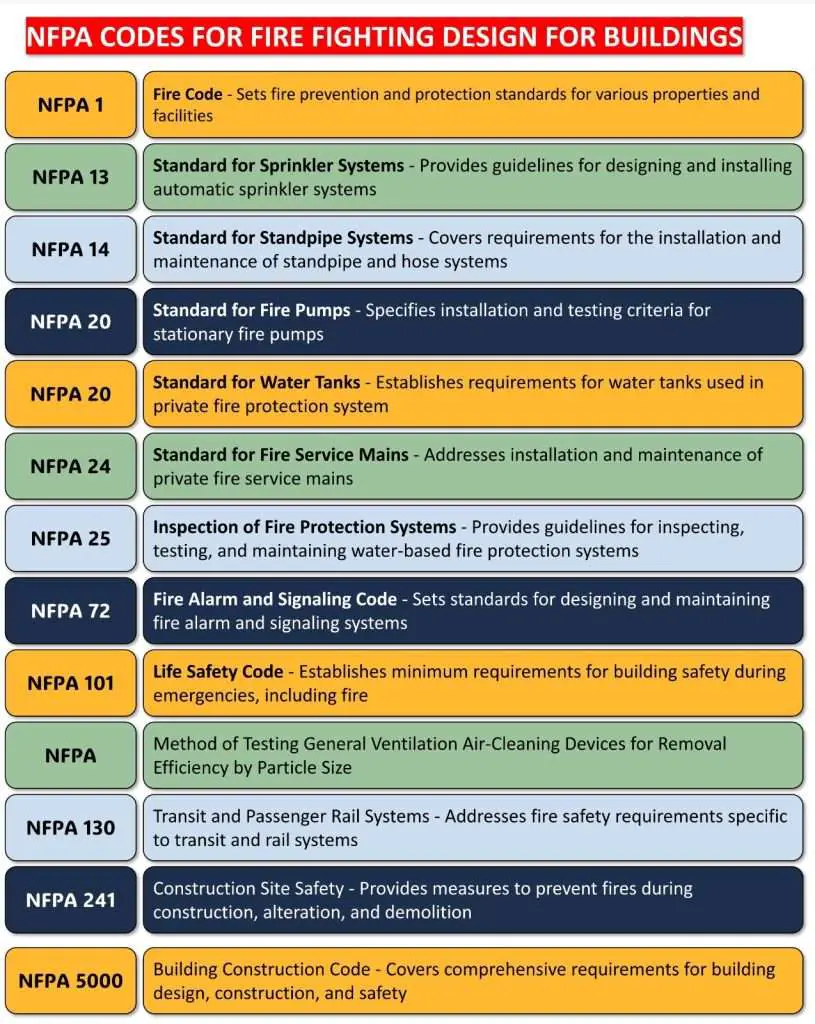
Collaborations and Partnerships
The NFPA understands that collaboration is key to effectively addressing fire safety issues. The association works closely with government agencies, other standard-setting organizations, research institutions, and various industries to develop comprehensive fire safety solutions.
Conclusion
The National Fire Protection Association plays a pivotal role in reducing the devastation caused by fires in the United States and beyond. Through its robust research, comprehensive codes and standards, education initiatives, and commitment to technological advancement, the NFPA continues to be a guiding force in the world of fire safety. As fires continue to be a significant threat to lives and property, the tireless efforts of the NFPA remain indispensable in protecting communities and promoting a safer future.

